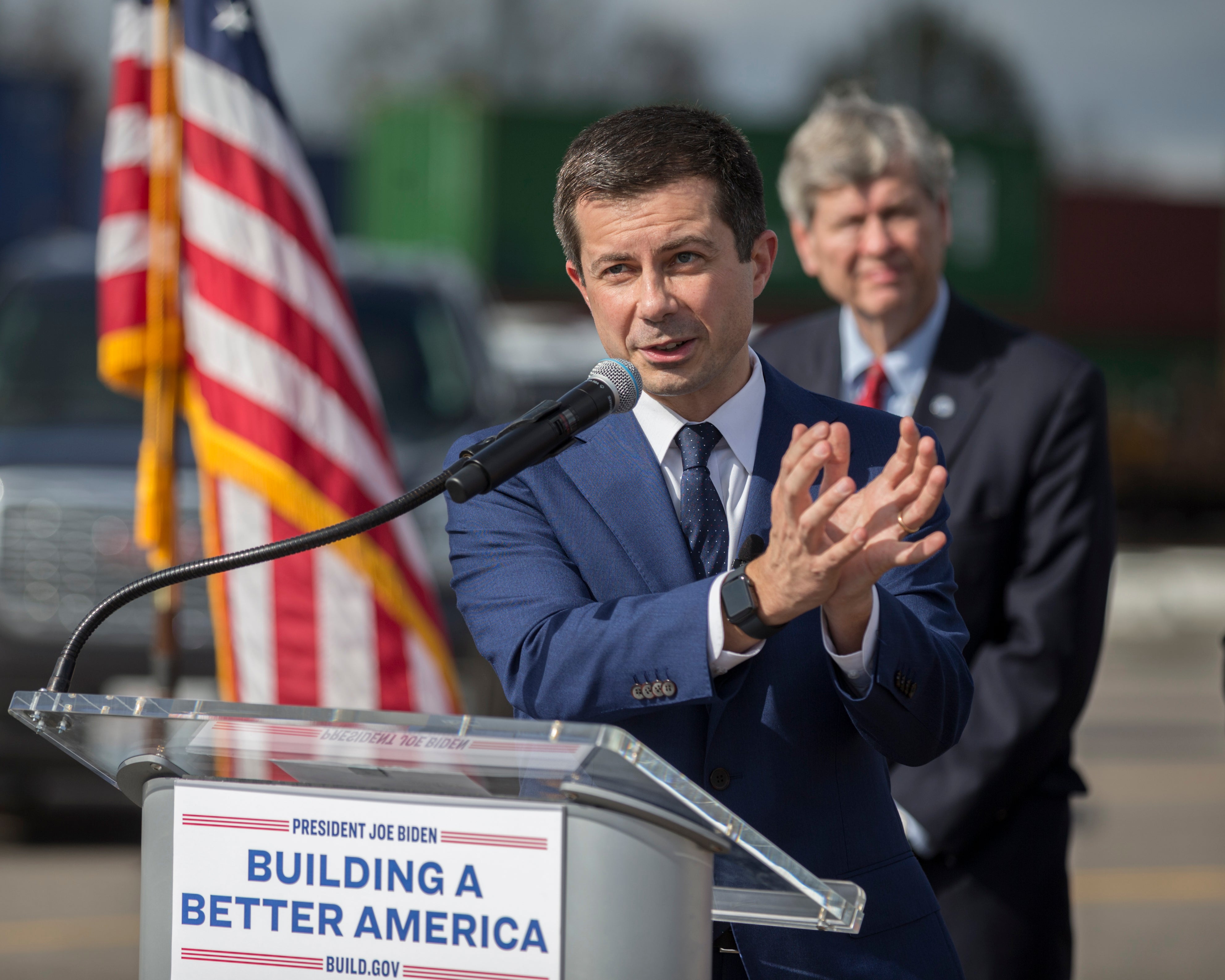The Independent's journalism is supported by our readers. When you purchase through links on our site, we may earn commission.
Buttigieg’s old campaign manager knows how to turn red states blue. Will Democrats listen?
As demographics changed, the left focused too much on suburbanites and not enough on the working class. But as unions gain traction across the country, it’s clear the tide is turning — and members of the Democratic Party needs to listen


At the age of seven, Ralph Chaplin saw a striking railway worker shot dead during the 1894 Pullman Strike. At least 70 workers were killed in the conflict between striking workers on one side and the Pullman Company and the US National Guard — deployed to protect the interests of capital — on the other. Two decades later, Chaplin would write the labor anthem “Solidarity Forever,” no doubt inspired in part by the violent repression of workers he witnessed as a child.
I thought of this as I read the recent Washington Post feature on Mike Schmuhl, Pete Buttigieg’s 2020 presidential campaign manager. Schmuhl is now traveling the country trying to elect Democrats in red states under the belief that “Democrats can attract more voters with a bold economic platform,” even though in rural areas like mine “the Democrats’ economic message has not been able to trump cultural issues.”
Following the events of the last few weeks, the words of Chaplin’s song ring truer than ever. Workers at Staten Island’s notorious JFK8 fulfillment center became the first Amazon employees in America to vote to unionize. Another unionization vote by Amazon employees — this one in Alabama — remains too close to call. Meanwhile, employees of a Starbucks in Knoxville, Tennessee became the first in the southeast to vote to unionize.
These efforts present an opportunity for Democrats and the left to make inroads where they have previously struggled, and to truly rebuild their base in America’s ruby-red heartland. Democrats should follow Schmuhl’s lead and recommit to red America. Unions are the foundation on which we rebuild that base.
Don’t believe me? Just look at the places unionizing. Despite its location in New York City, Staten Island is a Republican stronghold. A 2017 Bloomberg profile of the borough found that “service workers make up roughly half of Staten Island’s workforce and 40 percent of its residents,” while a fifth of its residents are what it defines as working class. Donald Trump carried the borough in 2016 and actually increased his share of the vote by 33 percent in 2020. Voters in Knox County, Tennessee broke for Trump by similar margins in 2020, and though voters in Jefferson County, Alabama — where the Amazon unionization vote is too close to call — favored Biden by more than 13 points, Alabama as a whole went for Trump by more than 62 percent.
What makes the election results notable is that in each of these instances is unionization efforts have come not from outside forces but from the bottom up. Workers took the initiative to unionize themselves in both Staten Island and Knoxville. Instead, Global Strategy Group — “a consulting and polling firm with close ties to Democratic political groups” according to reporting by CNBC — worked with Amazon to thwart unionization efforts at JFK8. That means while working class people were fighting to unionize, Democratic operatives were potentially helping an international corporation stop them.
This is, sadly, unsurprising. Since Bill Clinton embraced Reaganomics in 1992, the Democratic Party has all but divorced itself from the working class. As president-elect, Clinton pledged a “partnership between business, industry, and government” — and boy, did he deliver. Writing in their forthcoming book “Dirt Road Revival,” Maine State Senator Chloe Maxmin — who won two elections running as a progressive in a conservative stronghold in the most rural county of the most rural state — and her campaign manager, Canyon Woodward, explain that “Bill Clinton’s neoliberal policies of the 1990s decimated rural jobs in a way that is still felt today.” The same can be said about places such as the Rust Belt, the textile mills of the South, and, yes, Staten Island.
As voters lost faith that either party could materially improve their economic conditions, they began voting more based on cultural issues. Democrats, in the meantime, have found their base is increasingly concentrated in fewer — mostly gentrified urban and tony suburban — places. This base tends to be more educated and affluent, which in turn has left the party skewed towards the priorities and proclivities of this petit bourgeoisie. All the while it has lost virtually all touch with working class and heartland voters, who tend to prioritize issues of flag, faith, and family over their urban compatriots. In the culture wars over transgender rights, defunding the police, immigration, and abortion, these voters tend to be more culturally conservative.
The GOP understands this and has exploited this fact, using gay marriage as a wedge issue to sail to victory in 2004 and drumming up anti-immigrant, anti-Black sentiment in 2016. In 2022, they look to use LGBTQ Americans as a wedge again. All the while, they cleverly avoid any mention of economic or labor policy. In fact, Mitch McConnell has said the Republicans will release no legislative platform ahead of the midterm elections, running not on public policy but on fractious cultural issues meant to divide the American public.
They do this because they know it is their only way to win. Polling shows voters across party lines prioritize job creation over inflation and the national debt. They are ready for the wealthy to pay their fair share. They support stronger labor laws, including the PRO Act. On virtually every piece of public policy, the American people want stronger unions and more protections for workers. Union membership is, at 10.3 percent, the lowest it has ever been. Yet 68 percent of Americans (and nearly half of Republicans) approve of labor unions, the highest that number has been since 1965.
Thanks to both the pandemic and the changing nature of work thanks to modern technologies, American workers are gaining the upper hand for the first time in decades, exerting more control over everything from wages to working conditions. Capitalizing on this should not be difficult. To begin with, the Senate could pass the PRO Act, a bill which strengthens unions and which the House passed last year. They could also stop using firms, such as Global Strategies Group, which are complicit in union-busting efforts.
In doing so, they can appeal to the broadest swath of Americans by materially improving the lives of the working class. As the GOP attempts to divide, Democrats can run on a platform of bringing together the working people of this country. Together, the left can once again prove the truth in the lyrics of that old Ralph Chaplin song. As the inspiring workers from Staten Island to Knoxville and beyond are showing, solidarity is the answer. For the union makes us strong.

Join our commenting forum
Join thought-provoking conversations, follow other Independent readers and see their replies